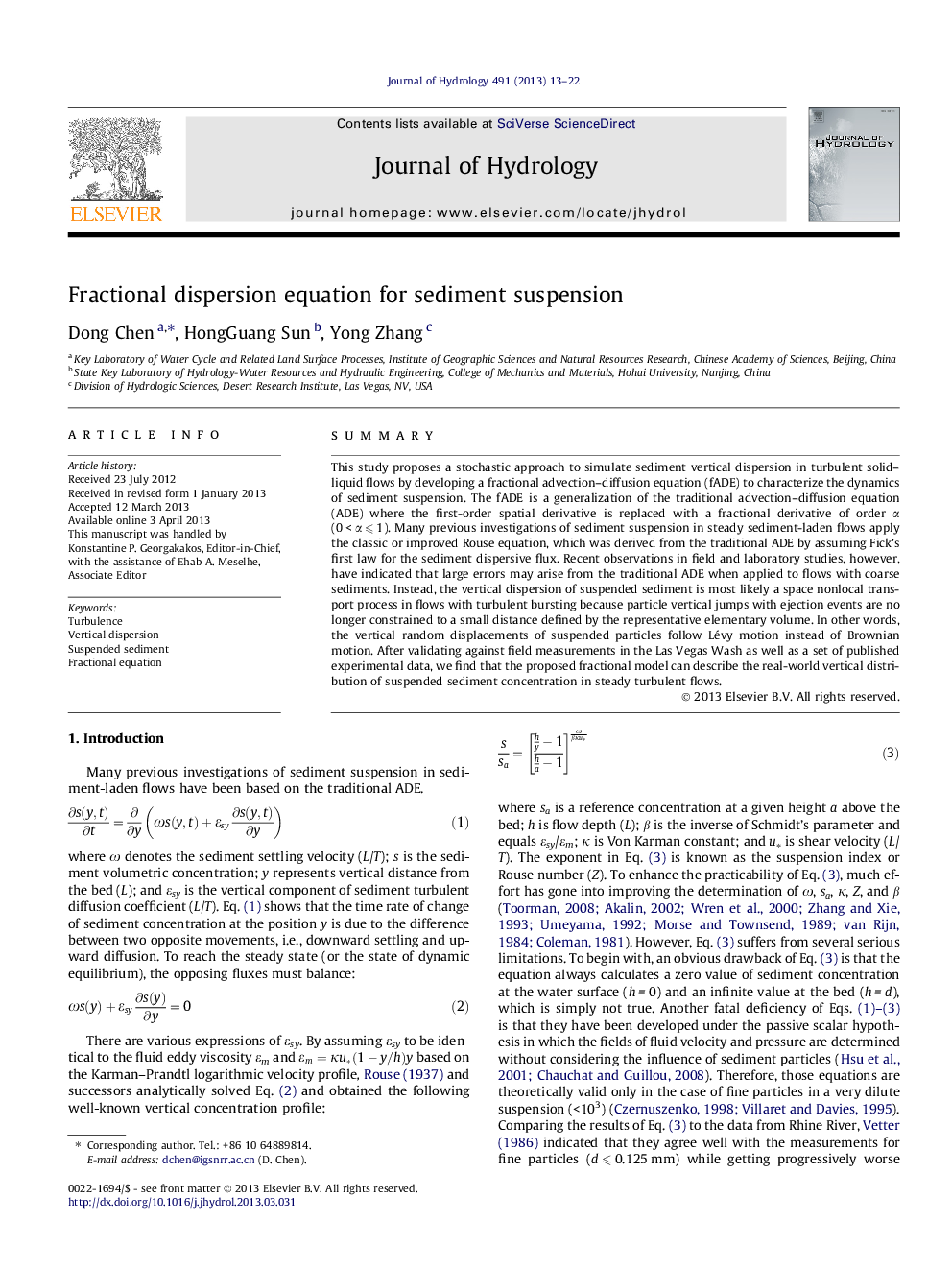| Article ID | Journal | Published Year | Pages | File Type |
|---|---|---|---|---|
| 4576274 | Journal of Hydrology | 2013 | 10 Pages |
•Large errors arise from traditional ADE for coarse sediment suspension.•Suspension is a space nonlocal process in flows with turbulent bursting.•We propose a fractional ADE for sediment suspension in turbulence.
SummaryThis study proposes a stochastic approach to simulate sediment vertical dispersion in turbulent solid–liquid flows by developing a fractional advection–diffusion equation (fADE) to characterize the dynamics of sediment suspension. The fADE is a generalization of the traditional advection–diffusion equation (ADE) where the first-order spatial derivative is replaced with a fractional derivative of order α (0 < α ⩽ 1). Many previous investigations of sediment suspension in steady sediment-laden flows apply the classic or improved Rouse equation, which was derived from the traditional ADE by assuming Fick’s first law for the sediment dispersive flux. Recent observations in field and laboratory studies, however, have indicated that large errors may arise from the traditional ADE when applied to flows with coarse sediments. Instead, the vertical dispersion of suspended sediment is most likely a space nonlocal transport process in flows with turbulent bursting because particle vertical jumps with ejection events are no longer constrained to a small distance defined by the representative elementary volume. In other words, the vertical random displacements of suspended particles follow Lévy motion instead of Brownian motion. After validating against field measurements in the Las Vegas Wash as well as a set of published experimental data, we find that the proposed fractional model can describe the real-world vertical distribution of suspended sediment concentration in steady turbulent flows.
